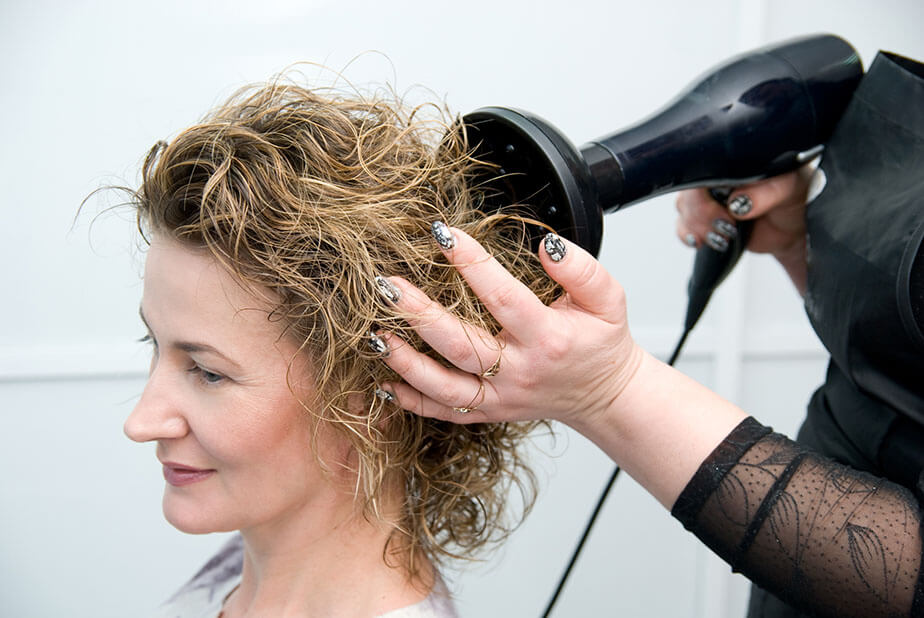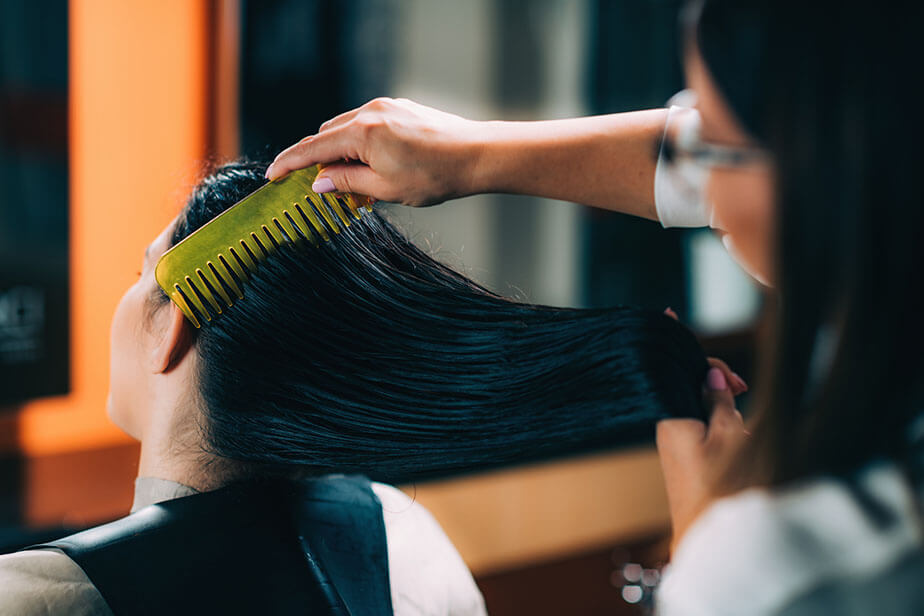Source: Microgen | Dreamstime.com
Navigating the quest for healthy and vibrant locks can challenge hair stylists. And in hair care terminology, the distinction between hydration and moisture is a common source of bewilderment. Although both are pivotal in maintaining optimal hair health, they are different, and determining which your client needs can be tricky.
At SALONORY, we’re here to untangle the intricacies, empowering stylists to understand the differences and pinpoint their clients’ specific needs. Ready to take your hair care skills to the next level with the right professional hair care products? Let’s dive in!
Understanding the Hair Shaft
Think of the hair as a castle, a fortress against the elements. The outermost layer, the cuticle, is like the castle’s formidable walls — a protective barrier shielding the interior from external threats. As we venture deeper into this metaphorical fortress, we encounter the cortex, where the secrets of hair color unfold through the influence of melanin. Beyond its role in color determination, the cortex holds the key to the hair’s overall health, flexibility, strength and resilience. Even deeper lies the medulla, the hair’s innermost layer. Although less understood than the cuticle and cortex, the medulla provides structural support, contributing to the overall integrity of each hair strand.
In this castle analogy, the hair’s cuticle, cortex and medulla collaborate to form a complex, resilient structure. Understanding these layers is the key to unlocking the secrets of maintaining healthy and vibrant hair from the outside in.
Hydration: The Quenching Hero
Hydration is the lifeline that keeps the hair’s cortex plump and elastic. Picture dehydrated hair as a wilting flower — brittle, dull and prone to tangling and static. Environmental factors like sun exposure, wind, harsh chemical treatments and excessive heat styling are the culprits.

Source: Tyler Olson | Dreamstime.com
In the battle against dehydration, humectants are your allies. Ingredients like glycerine and hyaluronic acid act like magnets, drawing and retaining water molecules deep within the cortex. Your tools for hydration include salon conditioners, leave-in treatments and hydrating salon shampoos.
Moisture: Sealing the Deal
Moisture works on the hair’s surface, sealing the cuticle to prevent water loss and add that coveted shine. Like arid soil, dry hair screams for moisture, showing signs of frizz, flyaways, rough texture and split ends. Recognizing these signs is key to effective moisture-boosting strategies.
Emollients are your secret weapons in the moisture battle. Shea butter and argan oil, among others, create a protective shield around the hair shaft, locking in moisture and keeping frizz at bay. Incorporate hair oils, serums and styling creams into your toolkit. Use them strategically to seal ends, tame flyaways and enhance shine.
Determining Your Client’s Hair Care Needs
Now, the million-dollar question: Does your client’s hair need hydration or moisture?
Hydration First-Aid
For fine, porous hair, signs of dehydration include brittleness, dullness and a propensity for tangles and static. Address these concerns by introducing humectant-rich leave-in conditioners, deep conditioners and hydrating shampoos. Techniques like steaming, hair masks and overnight treatments also improve the hair’s hydration levels.
Moisture Mission
Conversely, the journey for thick, coarse hair often involves battling moisture retention challenges. Indicators of moisture deficiency, such as frizz, flyaways, rough texture and split ends, necessitate a tailored approach. Equip clients with emollient-rich hair oils, serums and styling creams. Techniques like sealing ends, smoothing flyaways and augmenting shine are pivotal in fortifying the hair’s moisture barrier.
The Golden Rule
Embrace the golden rule of maintaining a balanced approach in hair care. Recognize that most hair types benefit from alternating between hydrating and moisturizing treatments. It’s the strategic dance between replenishing the internal water content and sealing the cuticle for surface protection.
Be attuned to the shifting needs of hair during different seasons — whether combating winter dryness or summer humidity. Tailor your approach to fit your clients’ styling routines, ensuring that the balance between hydration and moisture aligns with their lifestyles. This adaptability is the key to unlocking optimal results and ensuring that your clients’ hair radiates health and vibrancy year-round.

Source: Kanzefar | Dreamstime.com
From Lackluster to Luscious
In hair care, the duality of hydration and moisture unfolds as two sides of the same coin, and both are indispensable for fostering healthy, vibrant locks. By understanding their nuances, recognizing the subtle signs and executing personalized plans, stylists can steer clients toward hair that radiates vitality from within. With consistent effort and an appropriate approach, you can help clients achieve their hair goals and embrace their crowning glory.









Share Your Feedback